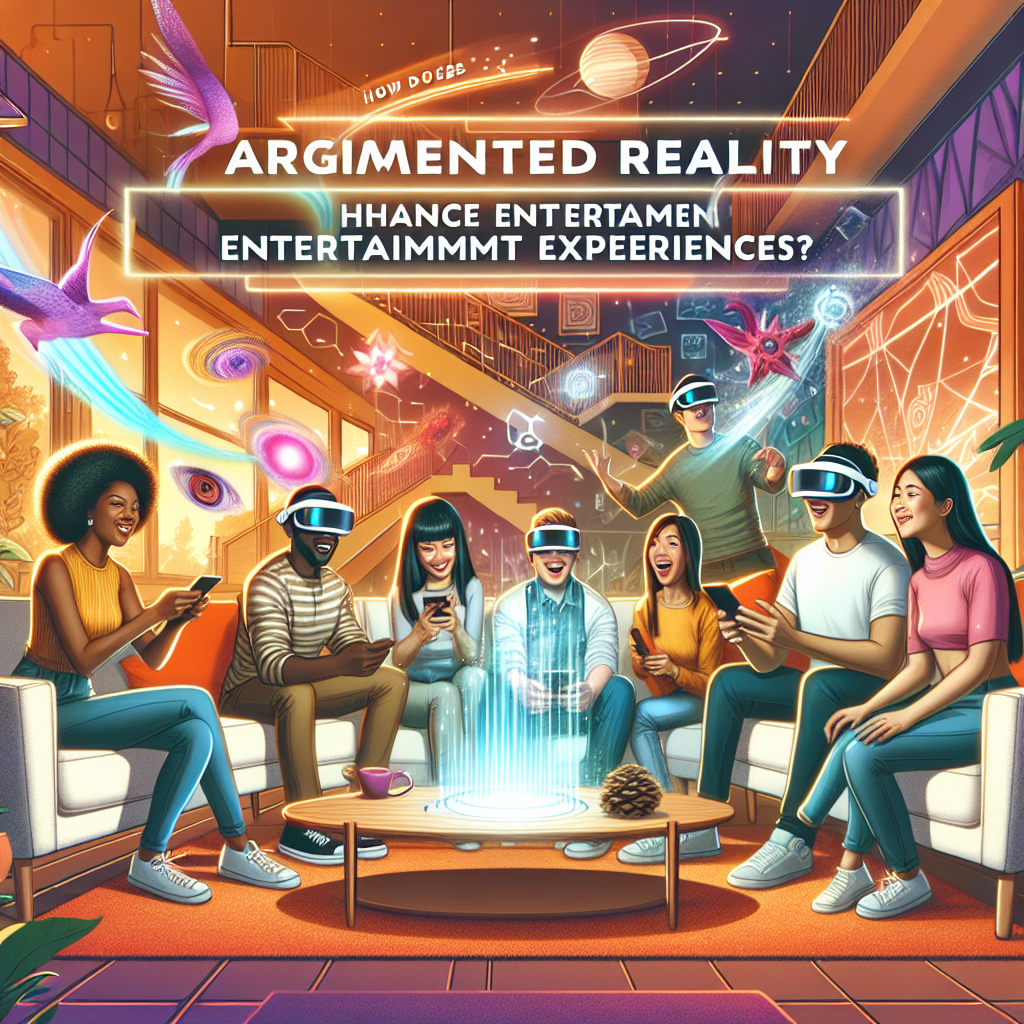Augmented reality (AR) technology has been making waves in the entertainment industry, enhancing experiences across various platforms such as gaming, live events, movies, and more. By blending digital information with the physical world, AR offers a unique and immersive experience that captivates audiences and elevates entertainment to new heights. In this article, we’ll explore how augmented reality enhances entertainment experiences and delves into the potential impact AR can have on the industry.
What is Augmented Reality?
Augmented reality is a technology that superimposes computer-generated images or information onto the real world, usually viewed through a device such as a smartphone or AR glasses. Unlike virtual reality, which creates a completely immersive digital environment, augmented reality enhances the existing surroundings by adding digital elements such as graphics, sounds, and haptic feedback.
How Does Augmented Reality Enhance Entertainment Experiences?
-
Immersive Gaming: One of the most popular applications of AR is in gaming. AR games like Pokémon Go and Wizards Unite have taken the world by storm by allowing players to interact with digital characters and objects in the real world. By blending gaming elements with the player’s physical environment, AR creates a unique and immersive gaming experience that encourages players to explore and interact with their surroundings.
-
Live Events: AR technology has also been used to enhance live events such as concerts, sports games, and theater performances. By overlaying digital graphics and visuals onto the physical world, AR adds a new layer of excitement and engagement to the audience’s experience. For example, AR can be used to display real-time player statistics during a sports game or to create interactive visuals during a concert.
-
Movies and TV Shows: AR has the potential to revolutionize the way we watch movies and TV shows. By using AR technology, filmmakers can create interactive and immersive experiences that blur the line between fiction and reality. For example, AR can be used to overlay additional information or behind-the-scenes footage onto a movie or TV show, allowing viewers to engage with the content in new and exciting ways.
-
Museums and Exhibitions: AR has also been used to enhance the visitor experience at museums and exhibitions. By using AR technology, museums can create interactive exhibits that bring history and art to life in a whole new way. For example, AR can be used to overlay digital animations onto physical artifacts, providing visitors with a deeper understanding and appreciation of the exhibits.
- Retail and Shopping: AR has the potential to revolutionize the way we shop and interact with brands. By using AR technology, retailers can create virtual try-on experiences, allowing customers to see how clothing or accessories look on them before making a purchase. AR can also be used to create interactive product demos and visualizations, making the shopping experience more engaging and immersive.
FAQs
Q: How is augmented reality different from virtual reality?
A: While both AR and VR technologies involve the use of digital elements in a real-world environment, the key difference is the level of immersion. Virtual reality creates a completely digital environment that users can interact with, while augmented reality enhances the real world by overlaying digital information onto it.
Q: How can businesses use augmented reality to enhance customer experiences?
A: Businesses can use AR technology to create immersive and interactive experiences for their customers, such as virtual try-on experiences, interactive product demos, and virtual tours. By incorporating AR into their marketing and sales strategies, businesses can engage customers in new and exciting ways.
Q: What are some of the challenges of implementing augmented reality in entertainment?
A: One of the main challenges of implementing AR in entertainment is the cost and technical complexity of developing AR experiences. Another challenge is the need for high-quality content and graphics to create a truly immersive experience for users. Additionally, the adoption of AR technology by consumers and businesses may also be a barrier to widespread implementation.
In conclusion, augmented reality has the potential to revolutionize the entertainment industry by creating immersive and interactive experiences that engage audiences in new and exciting ways. From gaming and live events to movies and museums, AR technology is reshaping how we experience and interact with entertainment content. As the technology continues to evolve and become more accessible, we can expect to see even more innovative uses of AR in entertainment in the years to come.
